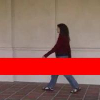169 search results - page 13 / 34 » Learning Local Models For 2d Human Motion Tracking |
ICMCS
2010
IEEE
13 years 5 months ago
2010
IEEE
Liquid crystal display (LCD) devices are well known to have slow response due to the physical limitations of the liquid crystals. Therefore, fast moving objects in a scene are oft...
CVPR
2009
IEEE
15 years 2 months ago
2009
IEEE
The articulated body models used to represent human motion typically have many degrees of freedom, usually expressed as joint angles that are highly correlated. T...
BMVC
2002
13 years 10 months ago
2002
A likelihood formulation for human tracking is presented based upon matching feature statistics on the surface of an articulated 3D body model. A benefit of such a formulation ove...
CVPR
2005
IEEE
14 years 9 months ago
2005
IEEE
Probabilistic models have been previously shown to be efficient and effective for modeling and recognition of human motion. In particular we focus on methods which represent the h...
ICCV
2009
IEEE
13 years 5 months ago
2009
IEEE
Most motion-based tracking algorithms assume that objects undergo rigid motion, which is most likely disobeyed in real world. In this paper, we present a novel motionbased trackin...

